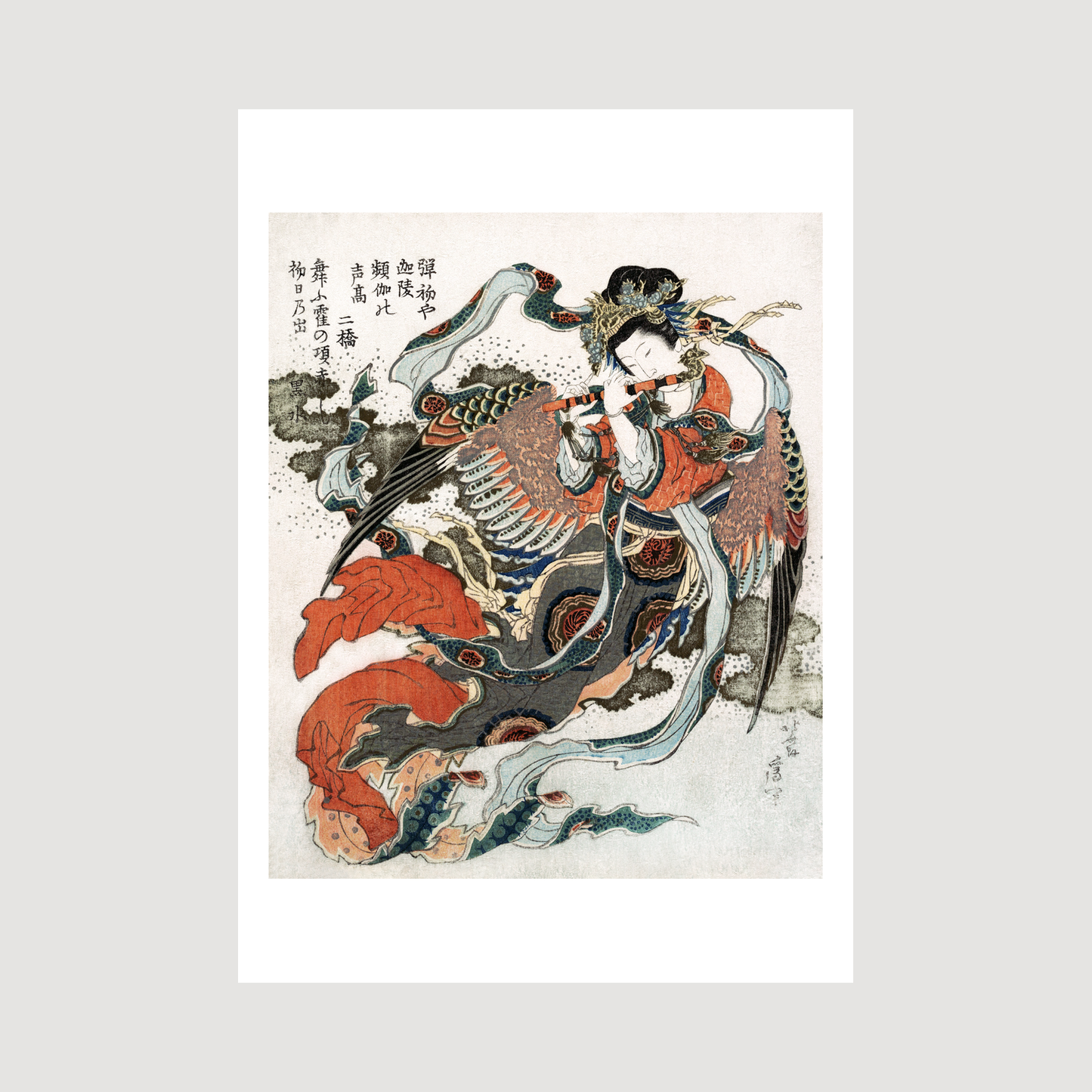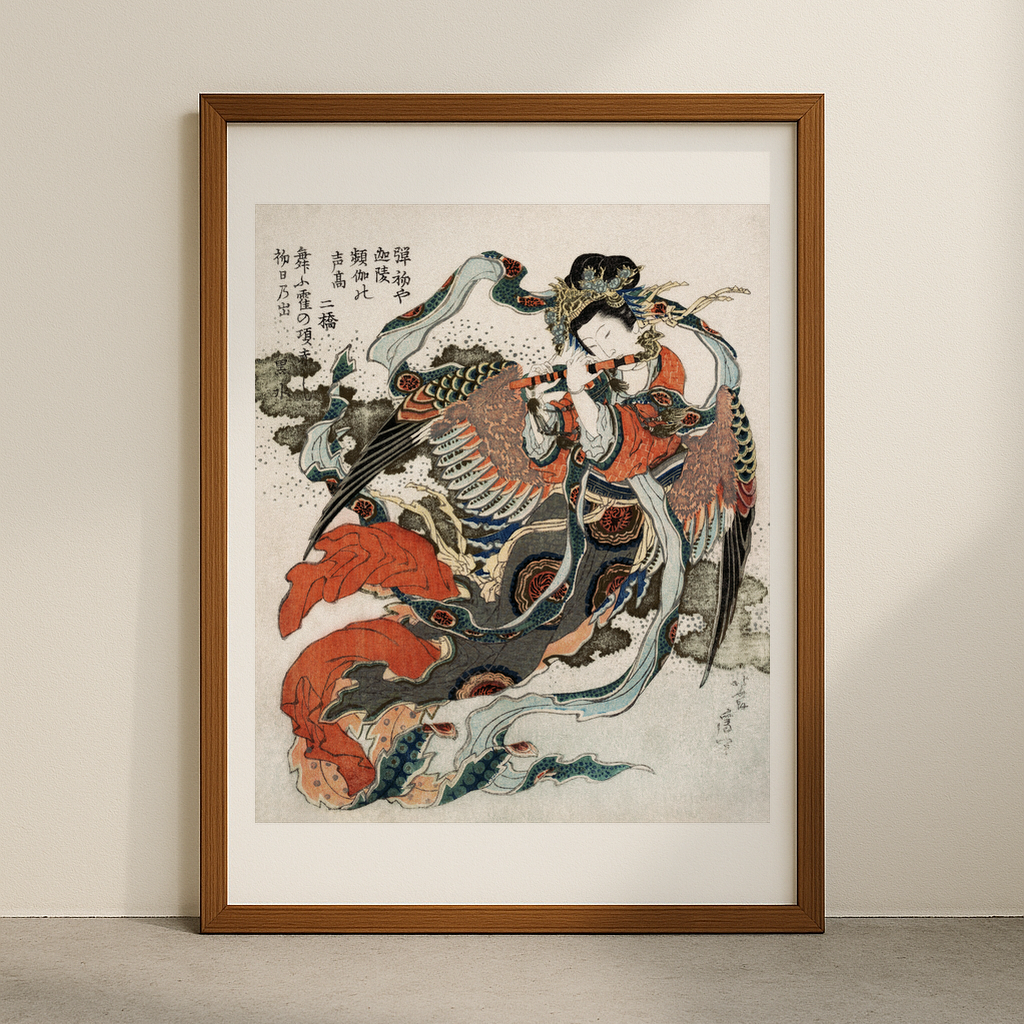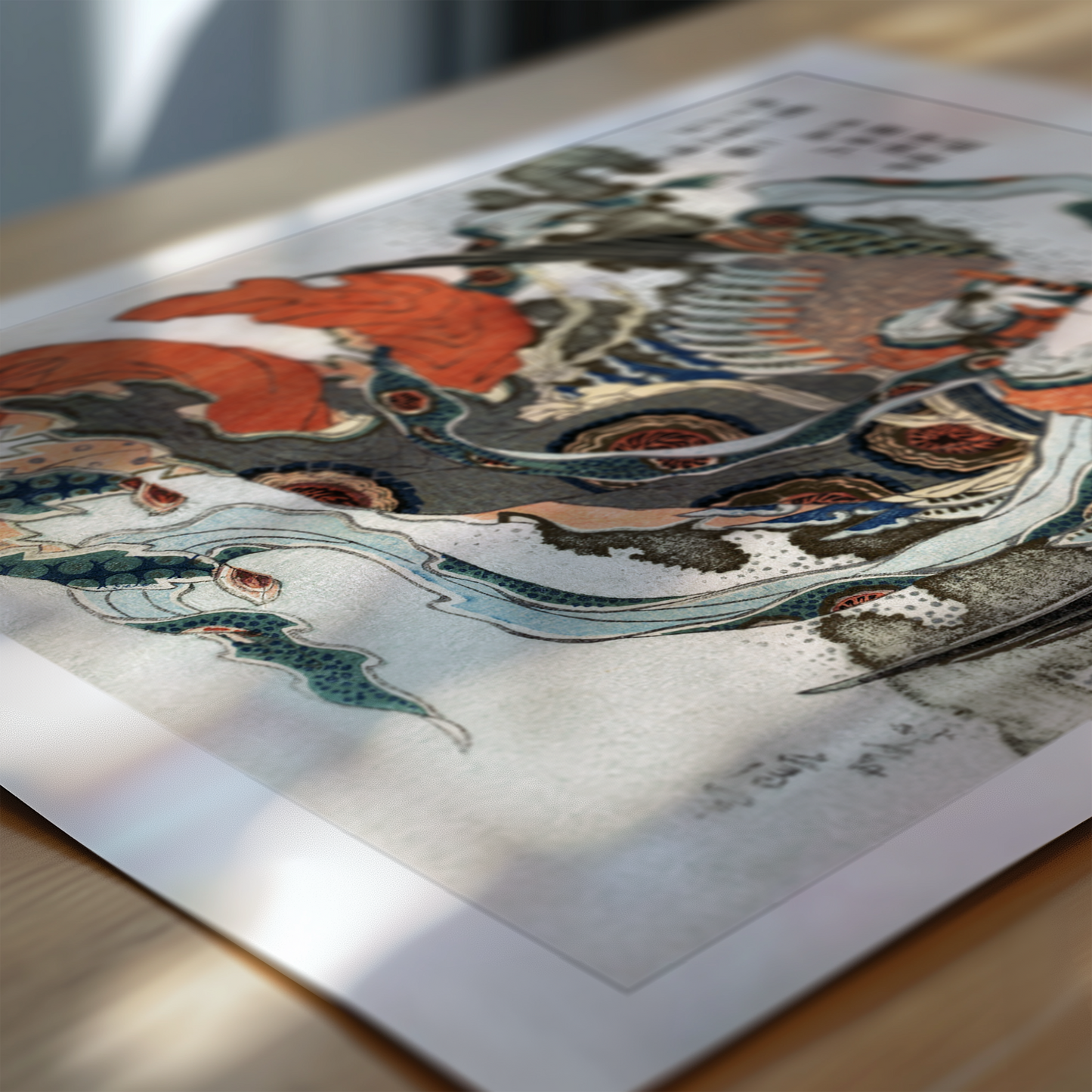1
/
of
6
Hokusai’s Japanese woman (1760-1849)
Hokusai’s Japanese woman (1760-1849)
Regular price
£12.45 GBP
Regular price
Sale price
£12.45 GBP
Taxes included.
Quantity
Couldn't load pickup availability
In this striking ukiyo-e work, Hokusai presents a Japanese woman with remarkable attention to detail and cultural authenticity. The piece exemplifies the distinctive woodblock printing technique of the Edo period, featuring clean lines, flat colour planes, and meticulous attention to the subject's traditional attire and posture.
Hokusai, who lived through the height of ukiyo-e's popularity (1760-1849), was known for his careful observation of daily life and his ability to capture the essence of Japanese femininity. This particular work showcases his mastery of the female form, demonstrating the elegant simplicity that characterised the 'floating world' aesthetic. The composition emphasises the woman's graceful bearing and traditional dress, with careful attention paid to the folds of her kimono and the intricate arrangement of her hair.
The artist's choice to focus on a single female figure reflects the broader cultural fascination with bijinga (pictures of beautiful women) during the Edo period. These works served both as artistic expressions and as fashion plates, documenting the evolving styles and social customs of the time. Hokusai's treatment of the subject reveals his exceptional skill in balancing artistic expression with cultural documentation, creating a work that continues to captivate viewers with its refined elegance and historical significance. The piece offers a window into the sophisticated visual culture of Edo-period Japan, where such prints were both art forms and popular entertainment.
View full details
Hokusai, who lived through the height of ukiyo-e's popularity (1760-1849), was known for his careful observation of daily life and his ability to capture the essence of Japanese femininity. This particular work showcases his mastery of the female form, demonstrating the elegant simplicity that characterised the 'floating world' aesthetic. The composition emphasises the woman's graceful bearing and traditional dress, with careful attention paid to the folds of her kimono and the intricate arrangement of her hair.
The artist's choice to focus on a single female figure reflects the broader cultural fascination with bijinga (pictures of beautiful women) during the Edo period. These works served both as artistic expressions and as fashion plates, documenting the evolving styles and social customs of the time. Hokusai's treatment of the subject reveals his exceptional skill in balancing artistic expression with cultural documentation, creating a work that continues to captivate viewers with its refined elegance and historical significance. The piece offers a window into the sophisticated visual culture of Edo-period Japan, where such prints were both art forms and popular entertainment.











